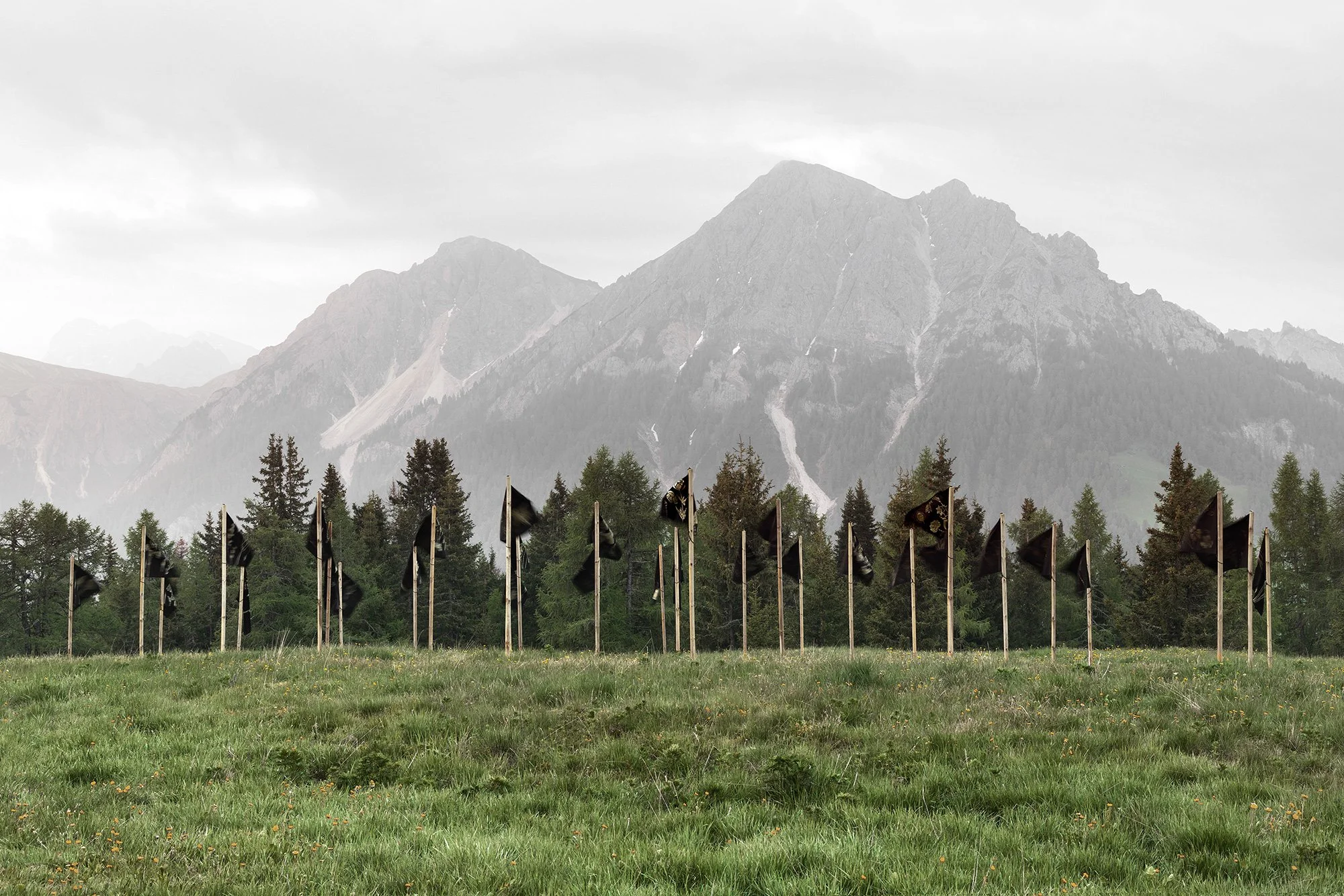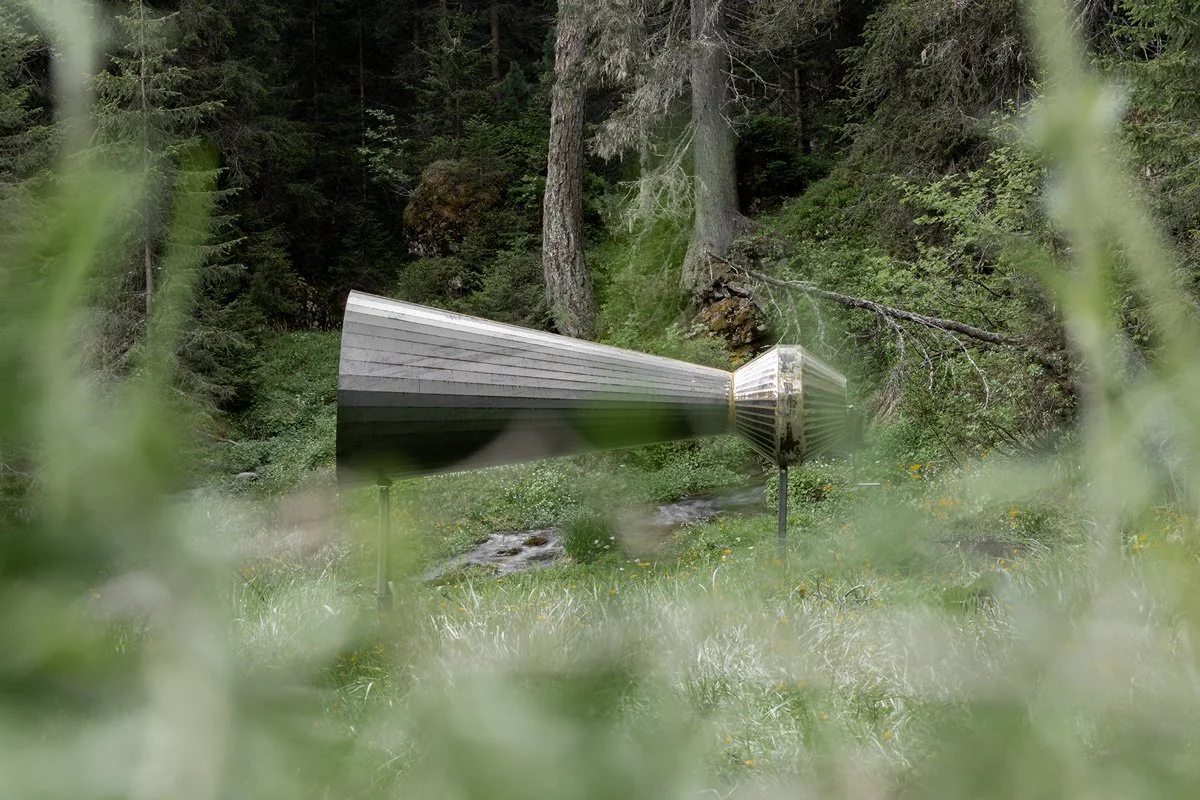Hortus Pictus
Riccardo Buonafede
Over 40 years of research, Ulisse Aldrovandi (1522-1605) commissioned more than 8,000 reproductions of plants, flowers, fruits, and animals. These illustrations are collected in 18 volumes—whose title gives the installation its name—now preserved at the University Library of Bologna. The 33 flags you see here were illustrated by Buonafede, based on the originals by the Bolognese naturalist, and feature species of flora and fauna from Val Badia: arnica, orchids, bellflowers, snowdrops, carnations, mountain geraniums, globe flowers, anemones, gentians, pasque flowers, but also mushrooms, mosses, spiders, birds, butterflies, and ants. For Aldrovandi, the goal was to classify and represent all natural things and to make visible what, at the time, could not be shown in real life. Today, in the age of the internet, climate change, and neo-nationalisms, reproducing these illustrations and installing them as flags pays homage not to nation-states, but to the great kingdom to which all of us belong: the natural world.




Exhibit place Plan de Corones
From the legendary wars of the Fanes Kingdom to the unfortunately real ones. In 1915, when Italy entered the First World War, the Austrians (the area was still part of the Austro-Hungarian Empire at the time) built a populous military village in Pederü. It was the encampment of the Kaiserjäger (the imperial hunters, i.e. the infantry of the army) who from here could easily reach some of the area's battlefronts such as the Valparola Pass, Forcella Lerosa, Lagazuoi etc. In the 1920s, when the war was over, the military village was largely destroyed. A few huts were saved, among them the officers' hut, which later became the refuge you can still find today, while the remaining ones were used as stables, warehouses or storage.
The reason why the camp was built in this location, apart from being strategic, is the abundance of water resources. In fact, very well known and abundant are, since ancient times, the natural springs that, even today, provide a large part of the population of San Vigilio di Marebbe (which annually consumes about 250 million litres) with water. The water reaches the springs after an underground route of over two kilometres that descends from the karstic plateau of Fanes. It re-emerges in Pederü and then returns underground, during many times of the year, hiding in the screes and stones of the Val di Marebbe. It hides underground during the autumn, winter and dry periods, but around June it re-emerges again further down the valley. Famous, for example, is the natural spring of the 'Ega de San Vì' (the spring of San Vito), which gushes out every year punctually in the middle of June (San Vito is celebrated on the 15th of this month) to dry out again in early autumn. Also famous is the nearby natural monument Les Fontanes (the Province of Bolzano has a special register of natural monuments, to which you will find the link below), where the water gushes out from forty springs, a true spectacle of nature that also feeds the stream.














